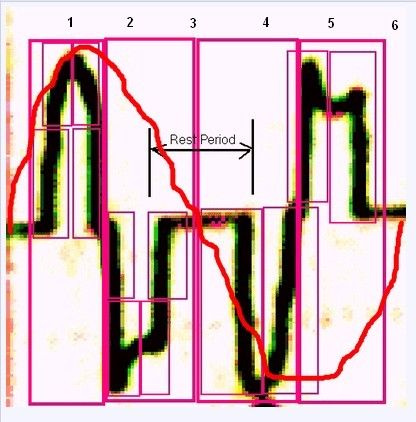Here is a single cap simulation of one switching scheme which is not ideal and is limited by the simulator clock capabilities but it illustrates that 320W peak power through load, is obtained from 831VA reactive power. So the generator needs to support this reactive power but it is returned to the generator. You still have all the transmission line losses remember.
Ideally 2 caps should be used with each cap charging in alternate half cycles and then discharging in the next alternate half cycles. This will give you the waveform shown in the presentation.
You can partially see this in the simulation but not exactly because the falstad simulator doesnt allow timing to be set up for each quadrant (1/4 cycle).
Barry
$ 1 4.9999999999999996E-6 13.097415321081861 47 5.0 50
v 400 448 400 320 0 1 50.0 177.0 0.0 0.0 0.5
T 464 352 560 416 0 0.11 1.0 3.3954918443849547 1.7033270709454484E-5 0.9999
w 464 320 464 352 0
w 464 416 464 448 0
w 560 352 560 320 0
r 592 320 688 320 0 24.0
w 560 416 560 448 0
p 560 416 560 352 0
l 560 448 720 448 0 0.13 1.7033270709898574E-5
c 880 352 880 416 0 1.9999999999999998E-5 111.9773684933316
159 752 320 688 320 0 0.1 1.0E10
w 832 320 880 320 0
w 880 320 880 352 0
w 832 448 880 448 0
w 880 448 880 416 0
w 800 272 928 272 0
w 832 448 768 448 0
w 592 320 560 320 0
w 800 272 752 272 0
w 752 320 832 320 0
w 720 448 768 448 0
w 752 272 720 272 0
w 720 272 720 304 0
w 656 512 928 512 0
w 928 512 928 272 0
R 656 512 608 512 1 2 200.0 2.5 2.5 2.2689280275926285 0.4
r 464 448 400 448 0 0.01
w 400 320 464 320 0
o 0 32 0 35 179.79859685352167 14.383887748281737 0 -1
o 0 32 1 291 1757.6744692288928 6.103515625E-55 1 -1
o 9 32 0 34 574.0653476371273 2.8703267381856366 2 -1
o 9 32 0 33 214.30172143725346 8.572068857490141 2 -1
o 5 64 1 35 559.9361855444511 9.765625E-105 3 -1
Ideally 2 caps should be used with each cap charging in alternate half cycles and then discharging in the next alternate half cycles. This will give you the waveform shown in the presentation.
You can partially see this in the simulation but not exactly because the falstad simulator doesnt allow timing to be set up for each quadrant (1/4 cycle).
Barry
$ 1 4.9999999999999996E-6 13.097415321081861 47 5.0 50
v 400 448 400 320 0 1 50.0 177.0 0.0 0.0 0.5
T 464 352 560 416 0 0.11 1.0 3.3954918443849547 1.7033270709454484E-5 0.9999
w 464 320 464 352 0
w 464 416 464 448 0
w 560 352 560 320 0
r 592 320 688 320 0 24.0
w 560 416 560 448 0
p 560 416 560 352 0
l 560 448 720 448 0 0.13 1.7033270709898574E-5
c 880 352 880 416 0 1.9999999999999998E-5 111.9773684933316
159 752 320 688 320 0 0.1 1.0E10
w 832 320 880 320 0
w 880 320 880 352 0
w 832 448 880 448 0
w 880 448 880 416 0
w 800 272 928 272 0
w 832 448 768 448 0
w 592 320 560 320 0
w 800 272 752 272 0
w 752 320 832 320 0
w 720 448 768 448 0
w 752 272 720 272 0
w 720 272 720 304 0
w 656 512 928 512 0
w 928 512 928 272 0
R 656 512 608 512 1 2 200.0 2.5 2.5 2.2689280275926285 0.4
r 464 448 400 448 0 0.01
w 400 320 464 320 0
o 0 32 0 35 179.79859685352167 14.383887748281737 0 -1
o 0 32 1 291 1757.6744692288928 6.103515625E-55 1 -1
o 9 32 0 34 574.0653476371273 2.8703267381856366 2 -1
o 9 32 0 33 214.30172143725346 8.572068857490141 2 -1
o 5 64 1 35 559.9361855444511 9.765625E-105 3 -1




 so please show me anything you have time to.
so please show me anything you have time to.
Comment